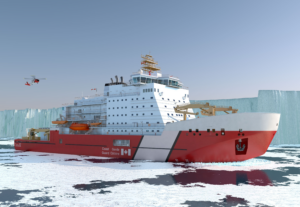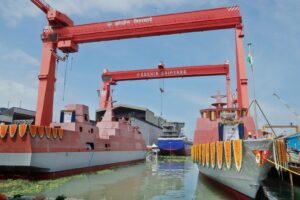New tanker deliveries over the next two to three years are expected to be in very low levels as shipyards are largely full, through the second half of 2025, due to the record amount of containerships and LNG carrier orders placed over the past two years.
In February 2023, the global tanker orderbook, when measured as a percentage of the existing fleet, has fallen to a record low of less than 4 percent. This is due to a lack of new vessel ordering with just 8 million deadweight tons of new tanker orders placed in 2022, which was the lowest since the mid-1990s, says Teekay Tankers in its fourth quarter and annual 2022 results report.
The company expects the tanker market to remain firm during 2023, due to positive oil market fundamentals, the continued rerouting of Russian oil exports away from Europe, and the subsequent replacement of imports into Europe from other sources, and an expected rebound in Chinese oil imports following the removal of COVID-19 mobility restrictions.
The available shipyard capacity has to a large extent been booked by bulk, gas and container ships, leaving very limited capacity to build additional Suezmax tankers with quality yards on this side of 2025, says from his side shipowner Nordic American Tankers.
The New York-listed owner of 19 suezmax tankers notes “this is very good news for the long-term market dynamics in our industry and we could potentially see net negative fleet growth in the conventional suezmax market in the coming two to three years.”
In accordance with the owner, the world’s Suezmax fleet (excl. shuttle, product & Jones Act tankers) counted 573 vessels as of December 31, 2022, with only 14 vessels in order (2% of the world suezmax fleet). “This is a historically low orderbook by any measure,” as it is pointed out. Furthermore, only six suezmax tankers for delivery from the shipyards for the balance of this year, and only five Suezmax tankers are in the orderbooks for 2024. For 2025 there is so far only expected 3 vessels for delivery. For comparison, there was 32 Suezmax tankers delivered in 2022 alone.
Likewise, major shipowner Frontline PLC reveals in its fourth quarter 2022 report that new ordering of tanker tonnage in deadweight terms was the lowest reported in 27 years.
As Frontline says “there is a marginal number of available berths being discussed for late 2025 delivery, predominantly in China, but to compensate for the growing numbers of vessels reaching 20 years of age over the next years, one needs to look to 2026. This continues to be the fundamental reason one may remain positive for tankers for the years to come.”
During the fourth quarter of 2022 only two newbuilding orders were reported for VLCCs, two for LR2 tankers, and none for Suezmax tankers, according to Frontline which cites industry sources.
“At the end of the year the orderbook stood at 3.1% of the existing fleet for VLCCs, 1.7% for Suezmax tankers, and 13% for LR2 tankers,” as it is additionally said.
At the same time, Europe’s increased need for liquefied natural gas (LNG) looks set to intensify competition with Asia, for limited new supply available over the next two years, and may dominate LNG trade over the longer term, energy major Shell said in its annual review. Industry forecasts expect LNG demand to reach 650 to over 700 million tonnes a year by 2040. More investment in liquefaction projects is required to avoid a supply-demand gap that is expected to emerge by the late 2020s, as Shell highlights.
In a release in its LNG outlook 2023, Shell said “Europe’s rapidly rising appetite for LNG pushed prices to record highs, and generated volatility in energy markets around the world.”
European countries and the UK imported 121 million tonnes of LNG in 2022, an increase of 60% compared to 2021, which enabled them to withstand a slump in Russian pipeline gas imports, in accordance with the Shell LNG Outlook 2023.



